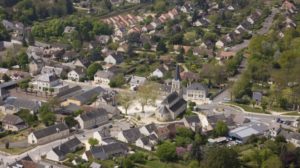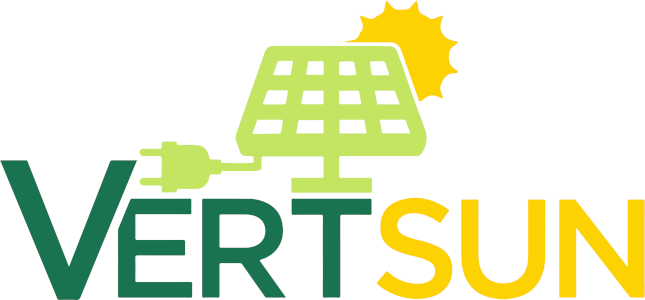When people talk about the energy transition, they tend to focus on how electricity is generated ( sun , etc..). But another question is equally important—how does the electricity get to where it’s needed? Without a smart grid, the whole project is doomed to failure. But one small Bavarian village is already living in the futur

A clean solution: The tiny village of Wildpoldsried produces eight times more green electricity than it actually consumes.
Wildpoldsried in the Oberallgäu region of southern Bavaria: With a population of just 2,500, it is home to more cows than people. Surrounded by lush green pastures, the village is close to the weathered ruins of an ancient castle and has stunning views of the first of the Alpine peaks. But tourists don’t only seek out this idyllic spot because of its spectacular scenery. “Every year, more than 100 groups of visitors arrive from all over the world, mainly from Africa, South America, and Asia,” says the village mayor, Arno Zengerle. “People want to find out what’s possible in this field.” When he says “this field,” he is referring to the energy generated in Wildpoldsried. Wildpoldsried has gained an international reputation as an “energy village” that produces almost eight times as much renewable electricity, not only sun , as it consumes. It is the recipient of numerous awards for sustainability. The locals say they don’t live in Silicon Valley but rather in “Energy Valley.”
In just 20 years, Arno Zengerle has turned a village with generally poor infrastructure in Bavarian Swabia—about a two-hour drive from Munich—into a showcase project for the energy transition. When you look up, the onion domes of the churches are not the only landmarks. The roof of just about every barn in the village is fitted with solar panels, and on a nearby hill, there are eleven huge wind turbines, their blades turning lazily in today’s gentle breeze. The village is also home to two small hydropower plants and four biogas facilities.
A SMALL VILLAGE BECAME A SHOWCASE PROJECT FOR THE ENERGY REVOLUTION
So this is it then? The energy transition is in full swing? Well, not quite. Because what’s good for the village’s carbon footprint can be a nightmare for the grid operators. The energy may be clean, but it depends on the sun and wind, so it’s unpredictable. Generating so much green energy regularly stretches the local grid systems to their limits. So clean energy needs to be accompanied by a smart grid.
The call for smart electricity comes from the very top. “The success of the energy transition depends on having modern, well-developed grids,” said Peter Altmaier, Minister for Economic Affairs and Energy, when he spent a week assessing the country’s power distribution systems. “The electricity grids are the cardiovascular system of our power supply. They have to be totally reliable, from the wind turbines in the North Sea to the charging stations in Bavaria.” That’s easier said than done. Germany is currently crisscrossed by more than 1.1 million miles of power lines, from high-voltage transmission cables to the standard domestic cables that supply the homes of end consumers. Ensuring that this huge machine is fit for the future is vital if the energy transition is to succeed. By 2030, 50 billion euros are set to be spent on expanding the network in Germany alone.
Little Wildpoldsried is also a pioneer in this field. Universities from all over Germany and major corporations, such as Siemens, are all testing new technologies in the village. Meanwhile, local energy start-up Sonnen is producing domestic batteries that store excess electricity and release it back into the grid at times when there is little wind or sun, known as lulls. The company is an international market leader in this field. Giants from the old energy world, such as Shell and General Electric, have invested millions in the company and top university MIT has named Sonnen one of the 50 most innovative companies in the world.
IN THE FUTURE, HOUSEHOLDS SHOULD BE ABLE TO SELL THEIR OWN GENERATED ELECTRICITY
It’s a beautiful fall day. The solar panels are glinting on the roofs. Sonnen’s ultramodern headquarters fit into the village about as well as a UFO. People are quietly going about their work; another container load of batteries is being sent out. In a light and airy meeting room, Joint Managing Director Jean-Baptiste Cornefert explains the concept: “The future of the energy world is green and local.”
But electricity producers and grid operators today still have to contend with phenomena such as load shifting and supply peaks. The north of Germany is full of powerful wind farms but demand for energy is low. On days when the wind is strong, the grid can’t cope with all the energy that is generated. The grid operator has to disconnect the wind turbines from the system and all the clean electricity produced in the north goes to waste. Meanwhile, in the south, large power plants have to ramp up production to make up for the energy shortfall.
This is known as “redispatch,” and just from the way Cornefert says the word, it is evident he finds it an inelegant solution. Last year alone, this sledgehammer approach to energy distribution in Germany led to additional costs of around one billion euros.

Handmade: The solar batteries are manufactured on site. The company aims to sell more than one million units over the next few years.
© sonnenGmbH
POTENTIAL FOR MILLIONS OF BATTERIES POWERED BY THE SUN
Consequently, the company is working on developing its own community of micro—generators that can trade the energy they produce. “Instead of constantly reducing and ramping up production from an 800-megawatt coal-fired power station as needed, thousands of households could either feed their surplus electricity into the grid or take it from there,” says Cornefert. He calls these Sonnen customers “prosumers,” as they’re both producers and consumers. A pilot project is currently being run with grid operator Tennet to see how stable electricity supplies can be guaranteed even when there are fluctuations in production. The project uses blockchain technology to track exactly who is receiving how much electricity from whom, and where each person is sending their own electricity.

What can Germany and the rest of the world learn from Wildpoldsried? Can these small-scale sun systems be implemented on a much larger scale? Now, it’s all about expanding the system, says Cornefert. He sees the potential for 1.4 million batteries to be installed in Germany alone over the next few years. And Sonnen has already equipped 40,000 households in South Australia with smart electricity storage systems for energy produced from sun . When combined, these batteries create a virtual 150-megawatt sun power plant. Sonnen systems are also being installed in thousands of homes in a new town that is being built in Arizona—a community of the future, where every resident produces and stores their own electricity.








